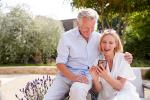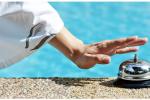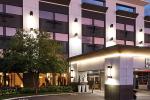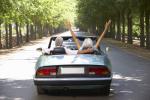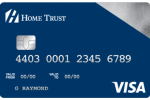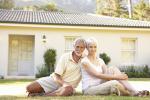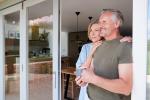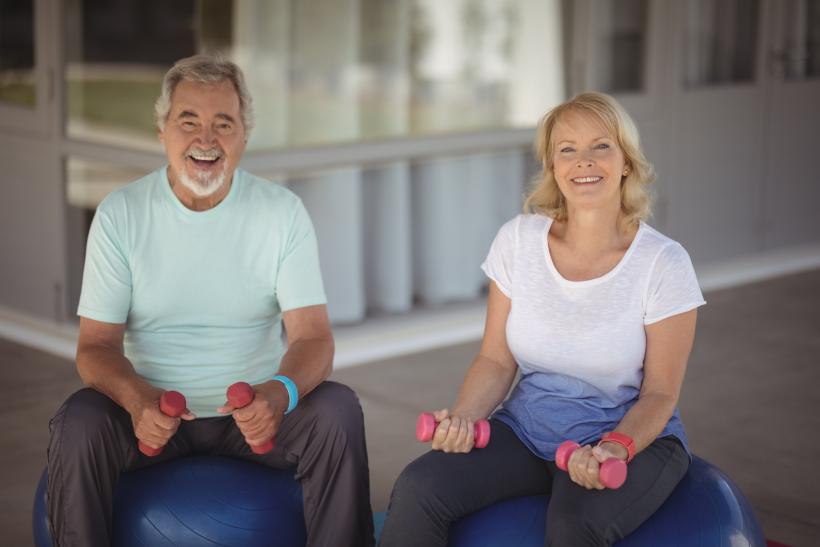
LAST UPDATED: April 17, 2024
For most snowbirds, being able to live an active, mobile lifestyle with as little pain and discomfort as possible well into your 60s, 70s and beyond is essential to living the snowbird lifestyle.
After all, participating in activities like tennis, golf, pickleball, swimming, hiking, walking and exploring your surroundings is a big part of enjoying your winters away.
Yet many snowbirds are plagued with back, knee, hip or shoulder pain that makes participating in these activities so painful that it takes away the enjoyment - or prevents them from participating in many of these activities altogether.
And while age catches up with all of us eventually, the good news is that by investing a little bit of time, planning and effort, there are many preventative steps snowbirds can take to delay, reduce the severity of, and even prevent, many of these physical ailments.
As the saying goes, “An ounce of prevention is worth a pound of cure”.
To help you out, here are our top tips from health and wellness experts for preventative measures you can take to stay fit and active year-round - in your winter destination and when you are back at home in Canada.
Keep moving!
One of the most important things snowbirds can do to help themselves is to keep moving – to whatever extent you are able.
To offer some insights and tips on keeping moving, we spoke to Jenna Leduc, Fitness Director at Heritage Oaks Golf & Country Club in Sarasota, Florida since May 2015. Leduc holds a Master’s degree in Exercise Science from Florida Atlantic University, as well as various health and fitness certifications including the ISSA Master Trainer & Corrective Exercise Specialist Certification, the TPI golf-fitness certification, and a 200-hour Yoga certification.
Q: You work with a lot of snowbirds every winter, what are some of the most common challenges, injuries and chronic conditions you see?
Leduc: Some of the more common issues I come across are joint replacements or preparing for joint replacement - primarily knee or hip - rotator cuff injuries, as well as chronic conditions we usually develop as we age. These include heart conditions, high blood pressure, high cholesterol, diabetes, and some cancers. Exercise has been shown to improve outcomes from nearly all chronic conditions.
Q: Why is keeping active so important as we age?
Leduc: As I mentioned before, being active helps prevent several chronic conditions. In the event that we still develop a heart condition or other chronic condition, exercise has been shown to improve outcomes, manage symptoms, and in some cases control the disease to the point individuals may reduce or eliminate medication. This isn’t the case for everyone. I always recommend consulting with your doctor and medical team to see how exercise and other treatment protocols can work together in a holistic approach.
Exercise also helps maintain, or serves as the mechanism to change, body composition. Muscle makes activities of daily living much easier. Regular activity and movement promote bone density. Strength is the “fountain of youth.” Regular physical activity benefits our brain and helps reduce our risk of falling.
Moreover, exercising or participating in physical activity in a group setting can improve our mental, social, and emotional health, offering us a chance to socialize and interact with others! Exercise builds physical and mental resolve, influencing all areas of our lives!
Q: What are the best ways to stay fit as we age - please comment on some, or all, of the methods below and add any other suggestions
Leduc: The best way to stay active is to keep it simple! Develop a routine that includes some stretching, strength, and cardiovascular exercise.
Try to stretch at least twice a week, working the muscles through a combination of static stretches (holding a stretch for 30-60 seconds) and reps that work a joint through full range of motion. Tai Chi Qi Gong, Gentle or Restorative Yoga, and Stretch classes are a great place to start.
Start with what you have when it comes to strength training: body weight exercises like the sit to stand or prisoner squat help develop the muscles of the lower body. Try to train the major muscle groups 2-3 times a week, with a day of active recovery in between. Consistency is key. Using what you have and building up from there will help you maintain your routine. Go for reps, 10-15 reps for 1-3 sets.
Aerobic activity gets our heart and breathing rate up. Aim for 150 minutes of moderate activity a week. That’s about 20 minutes of movement a day.
I like to measure aerobic activity with a talk-test. If I’m pushing it, my breathing has increased and I can manage some small talk like the weather or some weekend plans. If I’m trying to hit a higher intensity, or go for my 75 minutes/week of vigorous activity, my breathing rate and depth has increased, and I’m not making small talk. Maybe a grunt here and there, but the focus is definitely on that higher intensity bout.
Q: What are good exercises for people with limited mobility such as bad knees or hips etc.?
Leduc: I recommend a good physical therapist or orthopedist to get you started on the right track. Once a few ground rules are set, get creative and try everything you can!
The pool is a great tool to use to move through an appropriate range of motion with less strain on the joints. Water provides buoyancy to support your weight, allowing for more pain free movement. You can practice drills in water and get a little stronger, as the water also provides a little resistance.
If you aren’t a pool person, weight-supported positions can help you train. Look for recumbent (leaning back) pieces to build up your cardiovascular endurance in a supported position.
You can also do seated strength exercises, chair yoga or chair Pilates routines. Anchored exercise bands (tie to a secure railing or through a doorway) can be used for shoulder mobility drills. The wall is another tool to use for stretching and strength training and can help support you for balance, squats, wall pushups, and more.
Look for chair exercise classes that allow for progressions and regressions, with instructors providing options to make exercises harder or easier. If an instructor or trainer doesn’t directly mention it, grab any props or accessories that help you exercise, for example, a towel or block to prop your head while laying down, or for your legs in a stretch.
I have seen firsthand some remarkable accomplishments from individuals in their 60’s, 70’s and older who I have worked with. Whether they were told they wouldn’t be able to bend down or lift their arms out to the sides, in many cases hard work, consistency and incremental small steps helped them to defy these prognoses.
Seeing Health and Wellness Professionals
To supplement exercise and fitness regimes, many snowbirds also seek support from health and wellness professionals such as Massage Therapists, Physiotherapists; Osteopaths, Stretch Therapists, Reflexologists etc.
For tips on health and wellness professionals, we spoke to Kristine Groskaufmanis, an experienced Registered Massage Therapist in Toronto who has been practicing for thirty years. She has witnessed the benefits of massage and reflexology on many older adults and loves to see people prioritize their self-care.
Q: What sorts of physical problems and complaints do you see in older adults?
Groskaufmanis: Older adults often present with typical complaints associated with aging. Aches and pains in their muscles and joints, stiffness, poor circulation and balance issues.
Q: What are the benefits of massage therapy for older adults?
Groskaufmanis: Massage is beneficial at any age, but even more so for older adults. As we age we will have wear and tear on our muscles and joints. It’s a natural part of aging, but massage can help alleviate some of that pain and maintain the health of the muscles that support those joints. The healthier our muscles, the easier we can move and maintain our quality of life.
Q: Can massage help seniors with typical problems such as knees, hips, shoulders, arthritis, etc.?
Groskaufmanis: Massage can help with the typical complaints we see with age such as sore hips and knees etc. Although massage can’t directly help arthritic joints, it can address the surrounding muscles that are affected and provide some relief.
Pain has a domino effect. If the hip is sore, you will change how you walk and sit, which can then lead to knee pain or low back pain. By addressing the chief complaint and the surrounding structures as well, you can minimize this cascade effect of pain.
Also, studies have shown that massage helps boost immunity, so your overall health and well being benefits.
Q: Does massage support mobility?
Groskaufmanis: Massage can definitely help with mobility issues by strengthening our connection and awareness of our bodies. The more connected we are, the more we can tune into where our bodies are in space - called proprioception.
As we age our balance is more crucial, so it is important to strengthen those stabilizing muscles and maintain fluidity in our muscles and joints.
Q: What’s the difference between massage and physiotherapy?
Groskaufmanis: Physiotherapy is often more specific than massage therapy and uses other modalities such as laser, ultrasound and electric stimulation. Oftentimes physiotherapy will address a single issue - tennis elbow for example - so that the entire focus of treatment is solely on the elbow.
Physiotherapists will also often give specific exercises and stretches to strengthen or lengthen affected muscles.
Massage therapy can still be very specific to address a particular complaint, but it will also consider the surrounding structures that are also affected. Massage therapists tend to do manual therapy rather than use machines.
Q: Are there other treatments you recommend for seniors outside regular massage?
Groskaufmanis: Numerous studies have shown that acupuncture can be very effective for arthritis. It addresses inflammation, so it can help reduce the pain associated with arthritis and other inflammatory conditions. It is also great for overall balancing and well being.
Yoga is a wonderful way to maintain muscle strength and flexibility, and is excellent for balance. There are many alternative therapies out there that have merit and validity and are worth exploring.
What works for one person may not be ideal for someone else, but anything that offers self care and an increased awareness of one’s own needs is beneficial.
Q: What about Reflexology?
Groskaufmanis: Reflexology is a therapy that works with points in the feet that correspond to every organ and system in the body. By working on these points, the body is encouraged to heal itself naturally and find balance.
Many people find it extremely relaxing and healing. It can be a wonderful addition to massage or other modalities, or as a stand alone treatment.
It is a great alternative for people who may feel too sore to have a massage, or for those who may not feel comfortable being touched.
However, I would like to add that in general, we live in a touch deprived society. Touch and connection are so crucial for our well being, physically and mentally. Taking the time to connect with ourselves and our bodies is so important for our wellness, and helps deepen our connection with others as well.
Maintain a Healthy Diet
Dietitians tell us that maintaining a healthy diet as we age is key to keeping a healthy weight for our aging bodies, as well as helping to reduce inflammation.
Carrying excess weight can result in added strain on hips, knees, back, which can increase the risk of injury.
For every pound you lose, it is equivalent to 3lbs less strain on your knees, for example.
It is equally important to cut back on fatty foods and red meats as our digestive systems age, and also to reduce alcohol if we want to preserve our brain cells and put less strain on our liver.
The bottom line
Being proactive by identifying aches and pains early and starting to deal with them while they are still relatively minor can make a big difference.
Regular exercise and stretching, along with therapies such as massage and physiotherapy, can extend and improve your mobility and comfort - and even your lifespan, allowing you to continue to enjoy the snowbird lifestyle to the fullest as you age.
Remember, it’s never too late to start taking care of yourself, and even modest improvements can make a significant difference!

